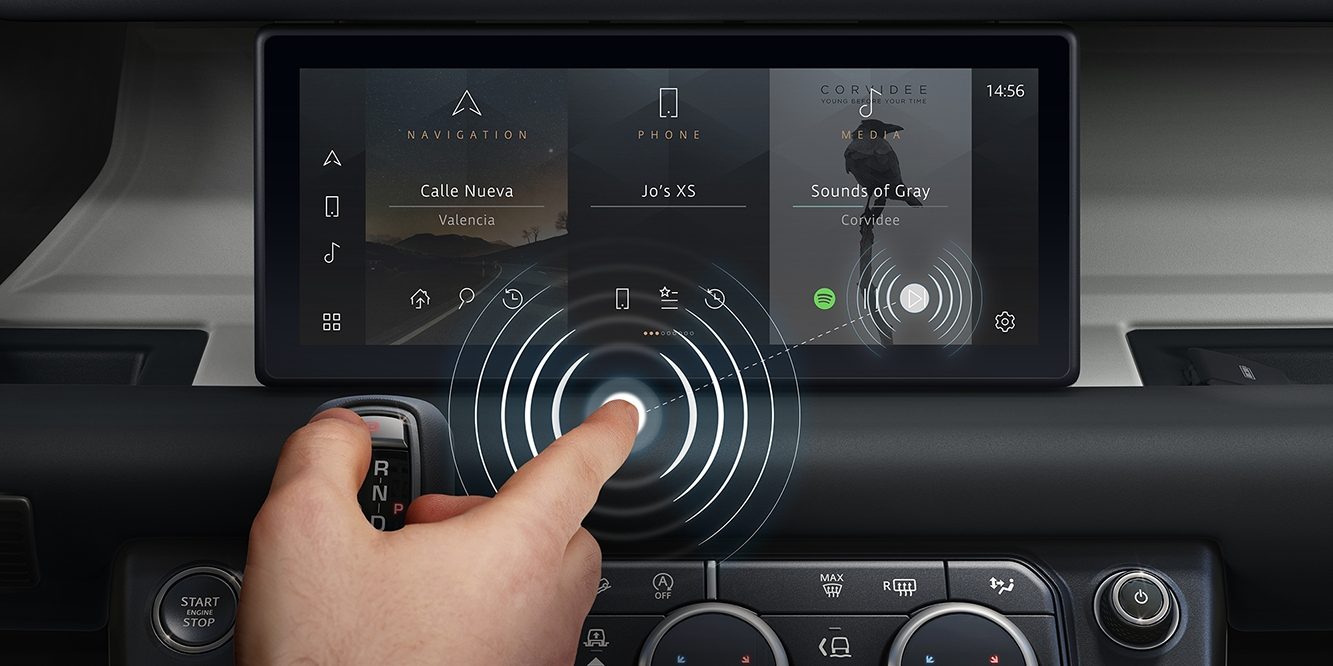New contactless touchscreen is the touchscreen you don’t have to… well, touch.
Jaguar Land Rover (JLR) and the University of Cambridge have developed a new contactless touchscreen technology that’s designed to “help keep drivers’ eyes on the road and reduce the spread of bacteria and viruses in a post COVID-19 world”.
The new technology, called ‘predictive touch’, uses artificial intelligence (AI) and sensors to predict where a user’s fingers will fall on a touchscreen, before making contact, and it can be used to control all the usual touchscreen functions including satellite navigation, vehicle heater/air conditioning controls, entertainment settings, phone calls and more.
According to JLR, laboratory tests and on-road trials have showed that predictive touch technology can reduce a driver’s touchscreen interaction effort and time by up to 50 per cent, which has obvious benefits when it comes to focussing on driving.
Of course, the other obvious benefit is how the technology can limit the spread of bacteria and viruses.
“As countries around the world exit lockdown, we notice how many everyday consumer transactions are conducted using touchscreens: railway or cinema tickets, ATMs, airport check-ins and supermarket self-service checkouts, as well as many industrial and manufacturing applications. Predictive touch technology eliminates the need to touch an interactive display and could therefore reduce the risk of spreading bacteria or viruses on surfaces,” Lee Skrypchuk, Human Machine Interface Technical Specialist at Jaguar Land Rover said.
“The technology also offers us the chance to make vehicles safer by reducing the cognitive load on drivers and increasing the amount of time they can spend focused on the road ahead. This is a key part of our Destination Zero journey.”
So how does it work? According to JLR, “the technology uses artificial intelligence to determine the item the user intends to select on the screen early in the pointing task, speeding up the interaction. A gesture tracker uses vision-based or radio frequency-based sensors, which are increasingly common in consumer electronics, to combine contextual information such as user profile, interface design and environmental conditions with data available from other sensors, such as an eye-gaze tracker, to infer the user’s intent in real time.”
Apparently the technology is essentially a software-based solution and it can be integrated into existing touchscreens and interactive displays, so could be available on vehicles sooner than you think.
See it in action in the below video and tell us what you think…











